By German Tirado, August 19 2025
Introduction

A common belief in B2B marketing is that business buyers make purely logical, rational decisions, carefully analyzing spreadsheets, technical specifications, and cost breakdowns before making a purchase. This belief feeds the myth that B2B decision-making is immune to the emotional and psychological influences that drive consumer behavior in B2C markets. As a result, many marketers think emotional branding, advertising creativity, and memory-building tactics matter less in B2B.
But science tells us otherwise. B2B buyers are still people, and people rely on memory shortcuts, heuristics, and emotions when making choices. The same human brain that chooses a favorite coffee brand or a pair of sneakers is also responsible for choosing an enterprise software provider, a business bank, or a cybersecurity vendor. Decades of evidence from the Ehrenberg-Bass Institute shows that B2B buying behavior mirrors B2C buying behavior in critical ways, particularly in the reliance on Mental Availability and Category Entry Points (CEPs) [1].
This is why the myth of “purely rational B2B buyers” is dangerous for marketers. It causes businesses to over-invest in rational product claims and under-invest in building brand salience, distinctive assets, and broad-reach advertising. The reality is that B2B purchase decisions often occur under time pressure, with incomplete information, and with significant reliance on the brands that come most easily to mind. This is where mental availability, brand distinctiveness, and advertising effectiveness play a central role [2].
In this article, we’ll break down the research and provide evidence that:
B2B buyers use memory shortcuts just like consumers
Category Entry Points (CEPs) determine which brands are recalled in buying situations
Mental Availability predicts B2B brand growth more reliably than rational messaging
Advertising and broad reach are essential to long-term success, even when most buyers are out-of-market
By the end, it will be clear that B2B brands grow the same way consumer brands do—by being easy to think of and easy to buy.
Table of Contents
Introduction
The Myth of Purely Rational B2B Buyers
What the Evidence Shows
Implications for B2B Marketers
Practical Examples
Conclusion
Frequently Asked Questions (FAQs)
Works Cited
The Myth of Purely Rational B2B Buyers

The “logic-only” view paints B2B buyers as calculators: weighing options, analyzing spreadsheets, and making objective, risk-free choices.
But this ignores three key realities:
Low-frequency purchases
Many B2B decisions—such as choosing banking partners, IT systems, or manufacturing equipment—happen infrequently, sometimes once every 3–5 years. When the moment finally arrives, buyers lean heavily on memory, not exhaustive evaluation [2].
The 95-5 Rule
Research shows that at any given time, only about 5% of B2B buyers are in-market. The other 95% won’t be buying for months or years [2]. If advertising only spoke to those few in-market buyers, brands would miss their growth opportunity. Instead, the role of advertising is to build memory structures now so the brand is top of mind when buyers eventually need it.
Category Entry Points (CEPs)
CEPs are the cues—like “when compliance deadlines approach” or “while onboarding new staff”—that trigger buyers to recall certain brands. B2B buyers, just like consumers shopping for cereal or a new car, use these shortcuts to reduce mental effort and quickly form a shortlist [1].
If B2B decisions were purely rational, buyers would start fresh each time, analyzing every available option. In reality, they rely on the brands that are easily accessible in memory.
What the Evidence Shows

Memory Drives B2B Decisions
Research across multiple B2B industries shows that the buying journey begins with brands already stored in memory. Buyers only consult colleagues or search engines if memory-generated options fall short—and even then, they prefer the brands they already know [1].
Bigger Brands = More Mental Shortcuts
Large B2B brands have wider, fresher memory networks. More buyers link them to more CEPs, which makes them more likely to be recalled in diverse situations. Smaller brands, by contrast, are linked to fewer CEPs and are more easily forgotten [1]. This mirrors the Double Jeopardy Law, where smaller brands suffer from both fewer buyers and weaker loyalty.
Advertising Builds Mental Availability
Advertising works not by providing a rational case in the moment of purchase, but by building and refreshing brand associations over time. Impressions accumulate and lie dormant until triggered by a buying situation. At that point, the brand linked to relevant CEPs has the advantage [2].
Implications for B2B Marketers

Build Brand + CEP Links
Your advertising should link your brand to a wide range of buying situations. For example:
“When scaling quickly and need reliable software”
“While preparing for compliance audits”
“Why cutting operational costs without disruption”
Go Broad, Not Just Narrow
Don’t focus solely on in-market buyers. Since 95% are out-of-market, the only way to grow is to reach broadly and continuously. Future buyers are influenced today.
Refresh Consistently
Memory decays. Competitors advertise. You need repeated exposures to keep associations fresh. Aim to refresh each key CEP at least twice a year.
Track Mental Availability, Not Just Awareness
Don’t stop at measuring “brand awareness.” Instead, track how many CEPs buyers associate with your brand. Research shows that each additional CEP linked reduces the chance of defection and increases the likelihood of being chosen at renewal [1].
Practical Examples
Cybersecurity software: Buyers don’t sit down with 200 vendors. They recall “that brand with strong compliance messaging” or “the one recommended during a board meeting.” Memory shortcuts drive consideration.
Business insurance: Research shows that decision-makers who link more CEPs to a provider (e.g., “for quick claims,” “for international cover,” “for staff health benefits”) are less likely to switch [1].
Payroll systems: Buyers might recall a brand “when struggling with employee onboarding” or “while cutting costs.” The brand with more CEP associations has the advantage.
Conclusion
The long-standing belief that B2B buyers are purely logical decision-makers has been thoroughly debunked by marketing science. Evidence shows that business buyers behave much like consumers, relying on memory shortcuts, heuristics, and emotions to simplify complex decisions. Just as in B2C markets, Mental Availability—how easily a brand comes to mind across many buying situations—plays a critical role in determining whether a brand is considered and ultimately chosen [1].
B2B marketers who ignore this reality put their growth at risk. Focusing only on rational product features, technical superiority, or cost-saving claims misses the deeper truth: when purchase situations arise, buyers often default to the brands that feel most familiar, accessible, and mentally available. This is why the 95-5 Rule is so important. At any given moment, only a small fraction of business buyers are in-market, while the vast majority are out-of-market [2]. Advertising, therefore, is not about triggering immediate sales—it’s about building and refreshing memory structures so that when buyers do enter the market, your brand is the one they recall first.
The practical takeaway is clear:
Invest in broad-reach advertising to reach both in-market and out-of-market buyers.
Link your brand to multiple Category Entry Points (CEPs) so buyers think of you in a wide range of business situations, such as “when scaling quickly,” “when cutting costs,” or “when facing compliance deadlines.”
Refresh brand associations regularly to prevent memory decay and counteract competitors’ advertising.
Measure brand health with the right metrics—not just awareness or lead generation, but Mental Availability, CEP coverage, and share of memory.
Ultimately, B2B brand growth follows the same universal laws of marketing as B2C. Buyers are polygamously loyal, large brands benefit from the Double Jeopardy effect, and brand salience drives market share. By embracing these evidence-based principles, B2B marketers can move beyond the myth of rational-only decision-making and instead focus on what truly matters: being easy to think of and easy to buy.
For B2B brands competing in crowded markets, success doesn’t come from being the “most logical” option—it comes from being the most memorable, distinctive, and mentally available option when the buying situation arises.
Frequently Asked Questions (FAQs)
1. Do B2B buyers really use emotions and memory shortcuts?
Yes. Research shows that B2B buyers are influenced by the same cognitive shortcuts as consumers. While decisions may involve committees and formal processes, the initial shortlist of brands is heavily influenced by brand familiarity, mental availability, and memory cues rather than purely rational analysis [1][2].
2. What are Category Entry Points (CEPs) in B2B marketing?
Category Entry Points are the contexts, triggers, and buying situations that lead a buyer to think of a brand. For example, a B2B buyer might think of a payroll provider when onboarding new staff or while trying to cut costs. Strong brands are linked to more CEPs, making them easier to recall when the need arises [1].
3. How does the 95-5 Rule apply to B2B buyers?
The 95-5 Rule shows that at any given time, only about 5% of B2B buyers are in-market while 95% are out-of-market. This means advertising is less about driving instant conversions and more about building long-term brand memories so that when buyers do enter the market, they remember your brand first [2].
4. Why is Mental Availability important in B2B marketing?
Mental Availability refers to how easily a brand comes to mind across multiple buying situations. The more CEPs a brand is linked to, the more likely it is to be recalled in a purchase situation. This is a stronger predictor of brand growth than rational product claims alone [1].
5. How should B2B marketers apply this research in practice?
B2B marketers should:
Run broad-reach advertising campaigns to reach both in-market and future buyers.
Build consistent links between the brand and multiple CEPs.
Refresh brand messaging regularly to maintain distinctive assets and memory associations.
Measure brand health through Mental Availability and CEP coverage, not just short-term leads.
6. Are B2B purchase decisions completely irrational then?
Not at all. Buyers still consider product features, pricing, and performance. However, the starting point of brand consideration is shaped by memory and familiarity. Rational evaluation often happens later in the process, after memory shortcuts have already narrowed the field of options.
Works cited
[1] Romaniuk, J. (2022). Category Entry Points in a Business-to-Business (B2B) World. Ehrenberg-Bass Institute for Marketing Science.
[2] Dawes, J. (2021). Advertising Effectiveness and the 95-5 Rule: Most B2B Buyers Are Not in the Market Right Now. Ehrenberg-Bass Institute for Marketing Science.
Address
Phone: 725-240-6870
Email : [email protected]
Address : 6440 Sky Pointe Dr. #140-341 Las Vegas, NV 89131
Artificial Intelligence
Marketing & Branding
Marketing & Branding
©2025 Max Digital Edge | All Rights Reserved
